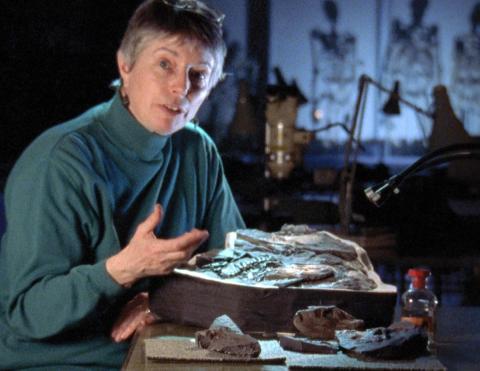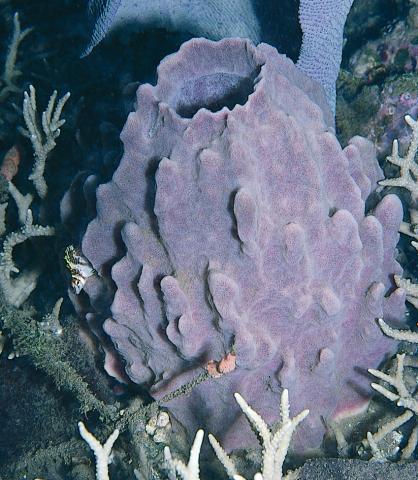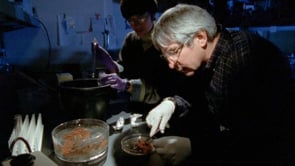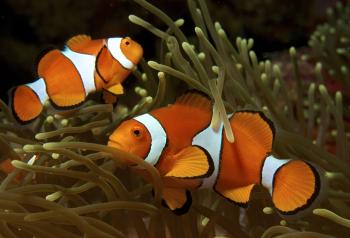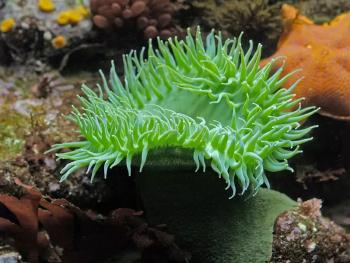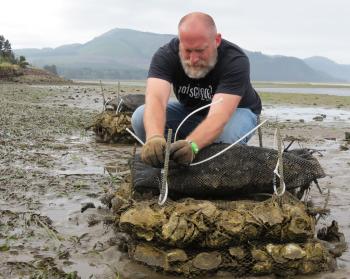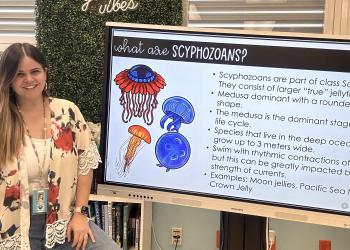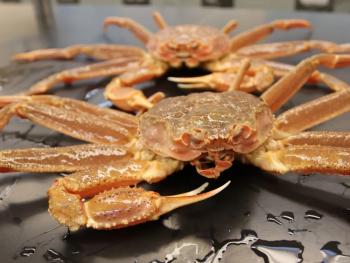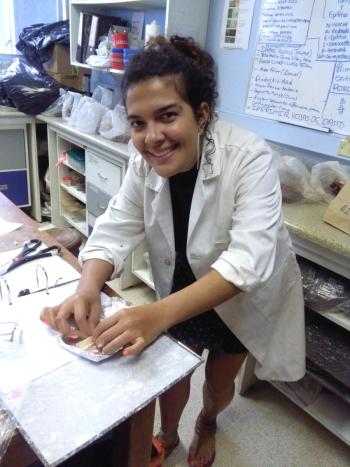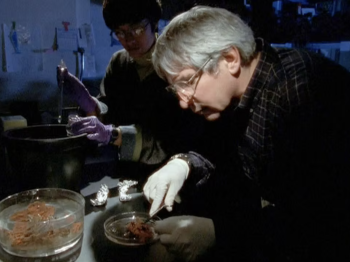
I'm obsessed with learning where we came from. And what I mean by that is not who your mother and father are, or your grandparents, but rather where do the organisms come from that gave rise to complex animals like us? -- Mitch Sogin
Molecular Biologist Mitchell Sogin, of The Marine Biological Laboratory at Woods Hole, Massachusetts, sent shock waves through the scientific world when his genetic research supported the placement of sponges at the base of the animal kingdom. How do we know sponges were our ancestors? It turns out that all organisms carry clues to their evolutionary history in their genes—
as a unique set of acquired genetic changes passed on through countless generations. Sogin discovered that sponges, indeed, were the start of the animal kingdom and laid the foundation for all animals to follow.
Sogin made this discovery by extracting DNA from a sponge and investigating one gene common to all animals. After painstakingly sequencing this gene, he compared its nucleotide sequence (represented by letters) to that of the same gene in other animals like worms, mammals, insects and more. Little variation of this gene in different animal groups would signify the groups were closely related while large variations would represent a more distant relationship. After comparing all the groups, Sogin traced out an evolutionary family tree, knowing that the animal at the base of the tree would be our oldest ancestor. He discovered that sponges indeed, were at the base of the animal family trees and must have laid the foundation for all animal life to follow. "The sponge was the first animal with the genetic blueprint for living large," Sogin says. "All animals are based upon that same blueprint.
About Mitchell Sogin’s Career
Mitchell Sogin, Ph.D., is an evolutionary biologist and director of the Josephine Bay Paul Center in Comparative Molecular Biology and Evolution and senior scientist with the Marine Biological Laboratory in Woods Hole, Massachusetts. His areas of expertise include chemistry, microbiology, industrial microbiology and biochemistry. He is a member of the American Society of Microbiology, Society of Protozoologists, International Society of Evolutionary Protozologists, Society for Molecular Biology and Evolution, American Association for the Advancement of Science, and American Society for Cell Biology. He has published many scholarly articles on his research.
When Sogin arrived in Woods Hole in 1989, he decided to take advantage of the considerable biodiversity in the marine environment of Cape Cod. Upon to moving to Woods Hole, Sogin says, "I had unlimited access to marine creatures. Since people always asked about animal origins whenever I spoke about my work, I decided to initiate molecular evolutionary investigations that focused upon as many simple marine creatures as I could get into the lab." Recently, Sogin has been the lead of a research project called the Deep Life Community, which seeks to map the abundance and diversity of subsurface marine and continental microorganisms in time and space to explore their roles and interactions with the deep carbon cycle.
